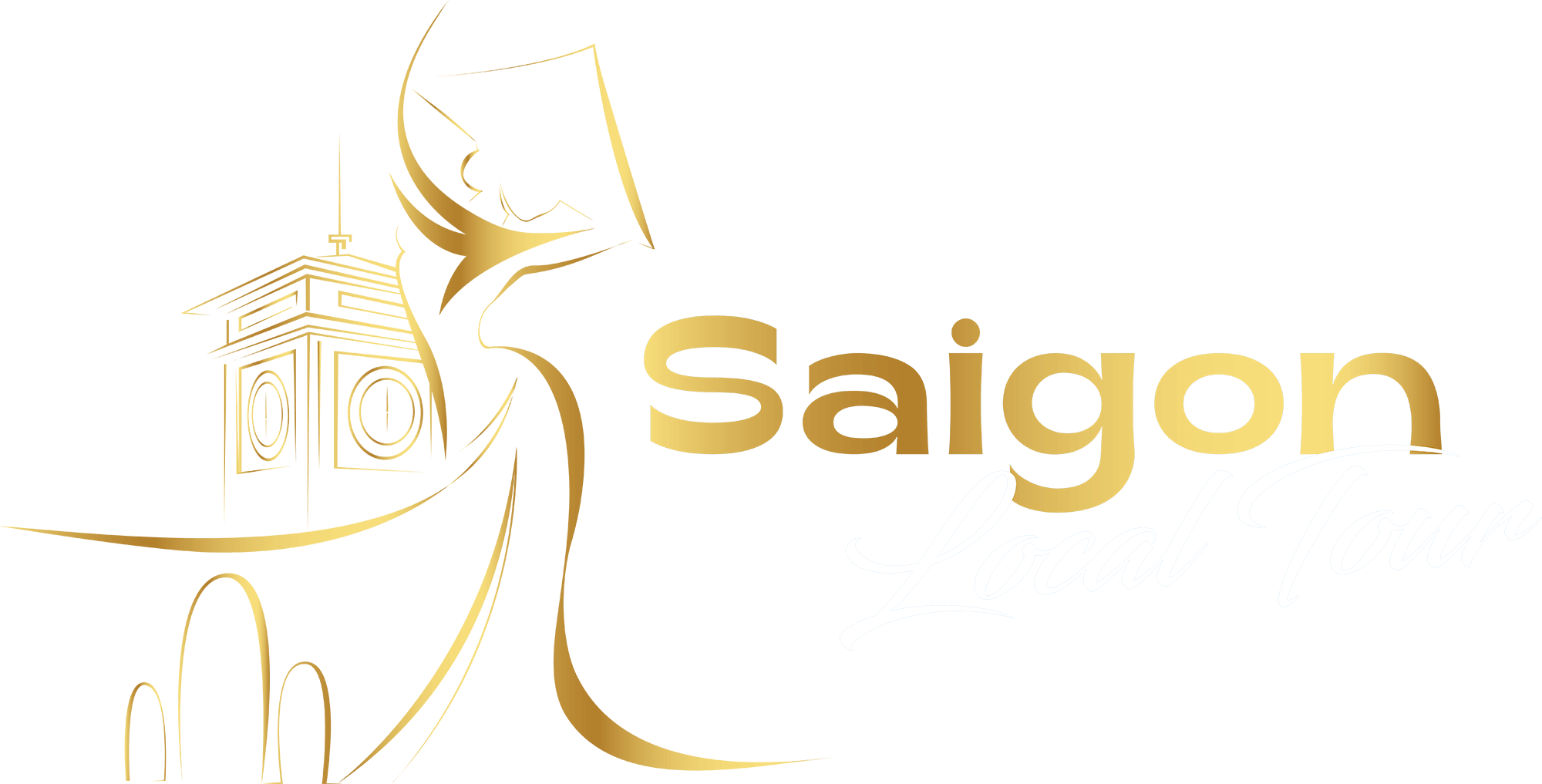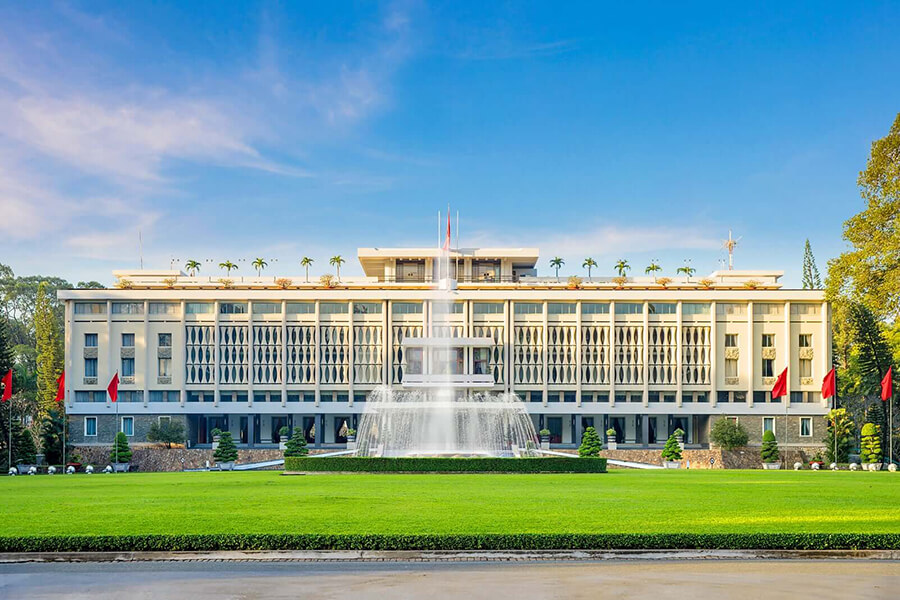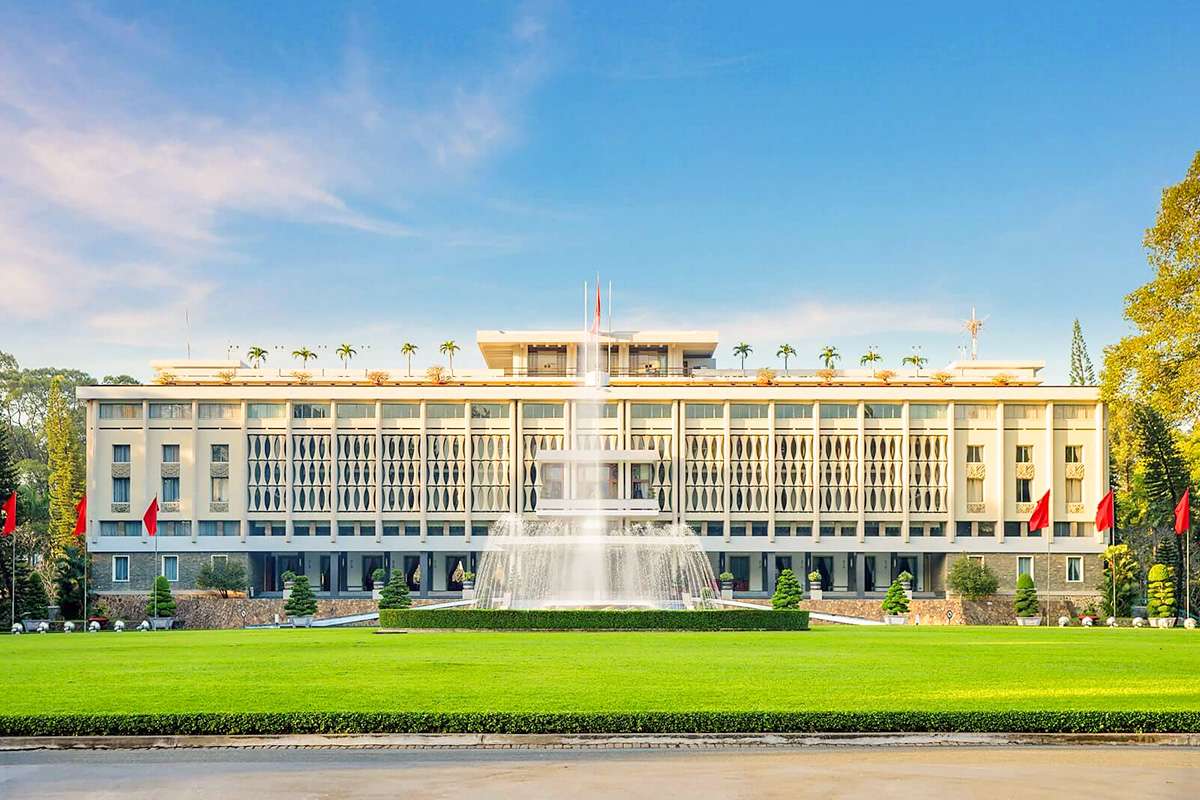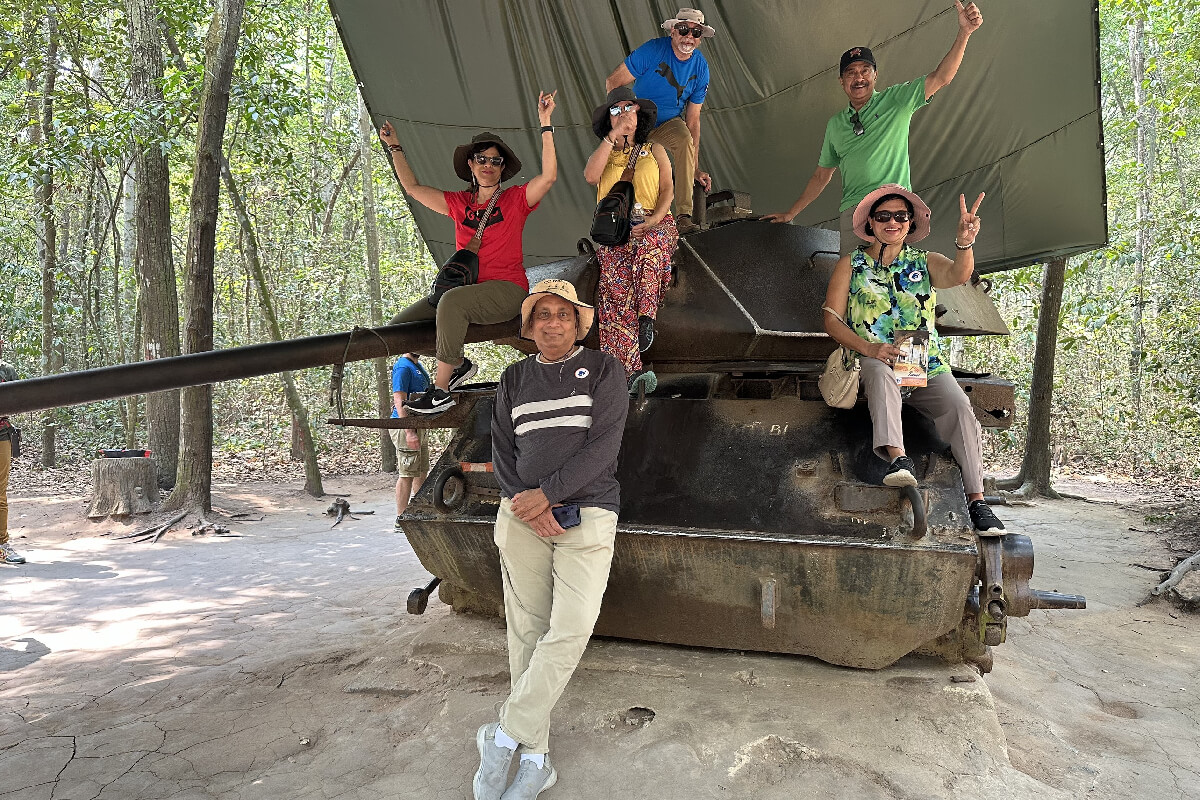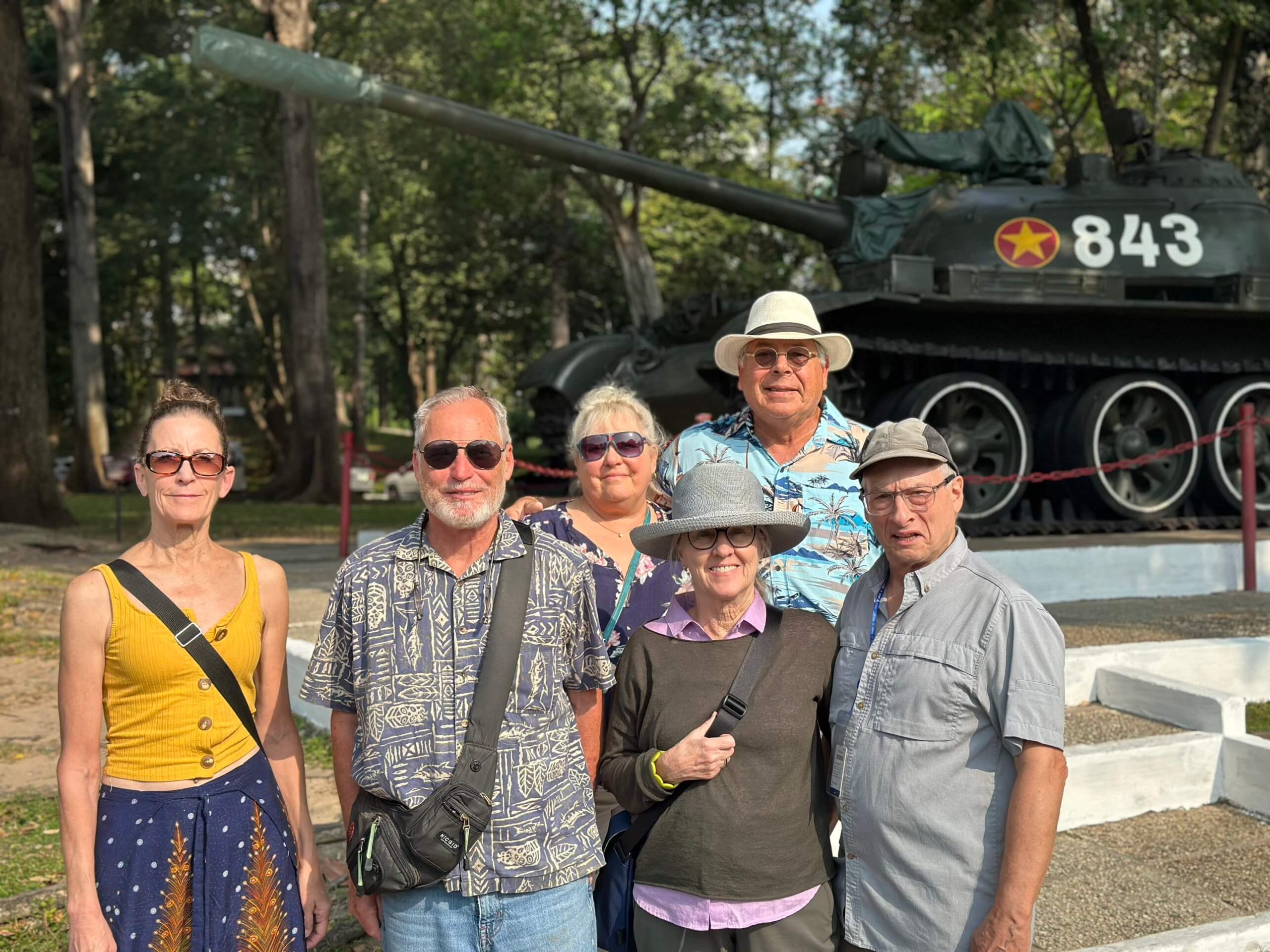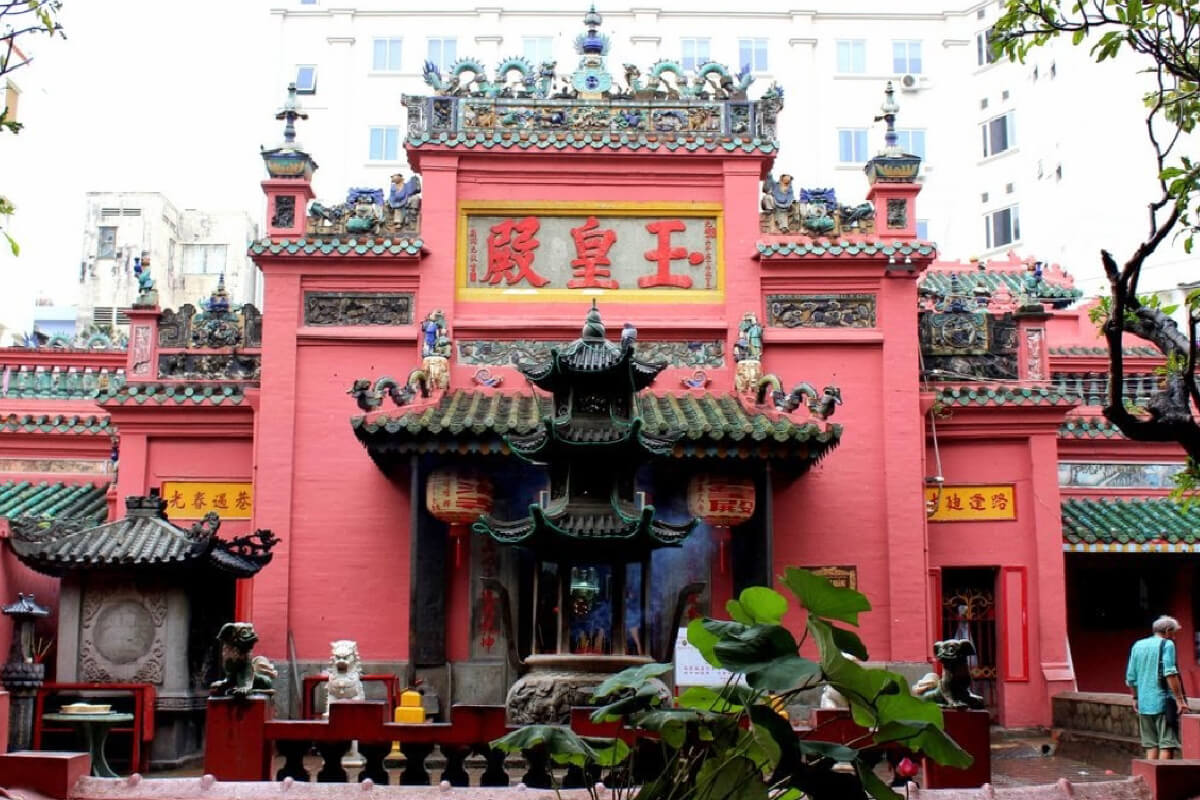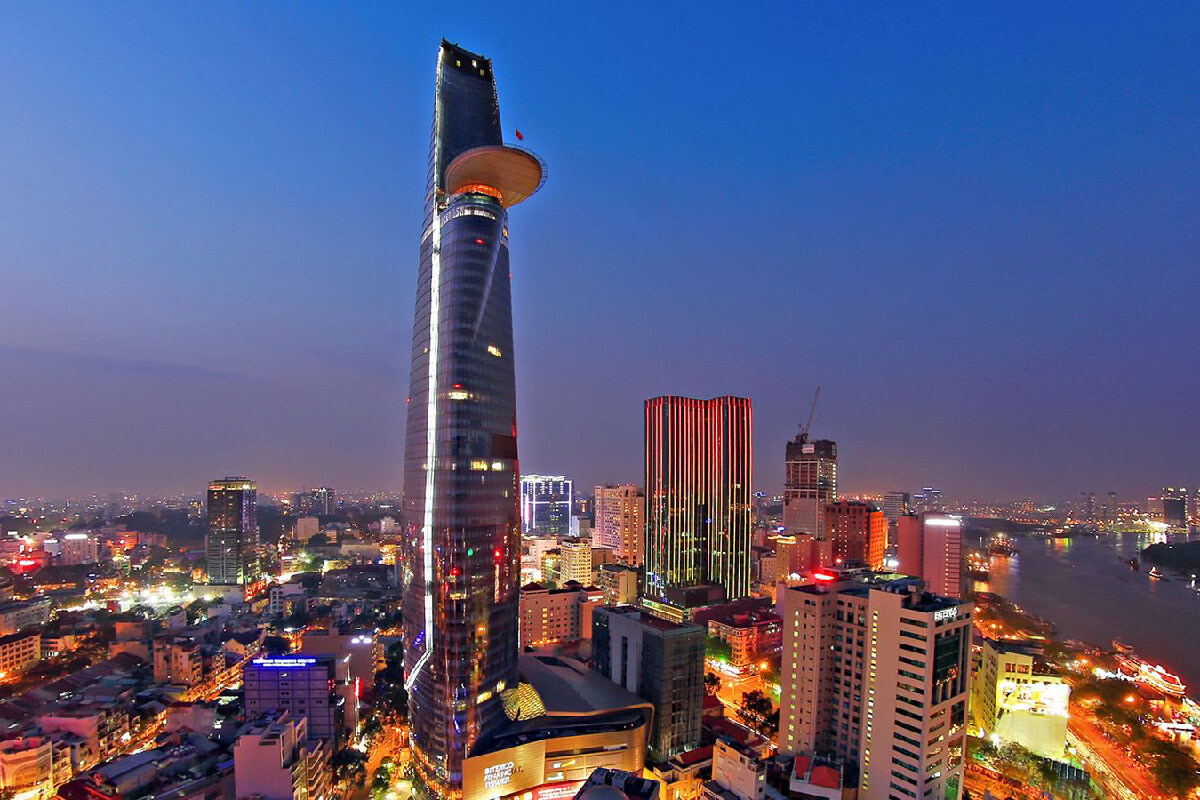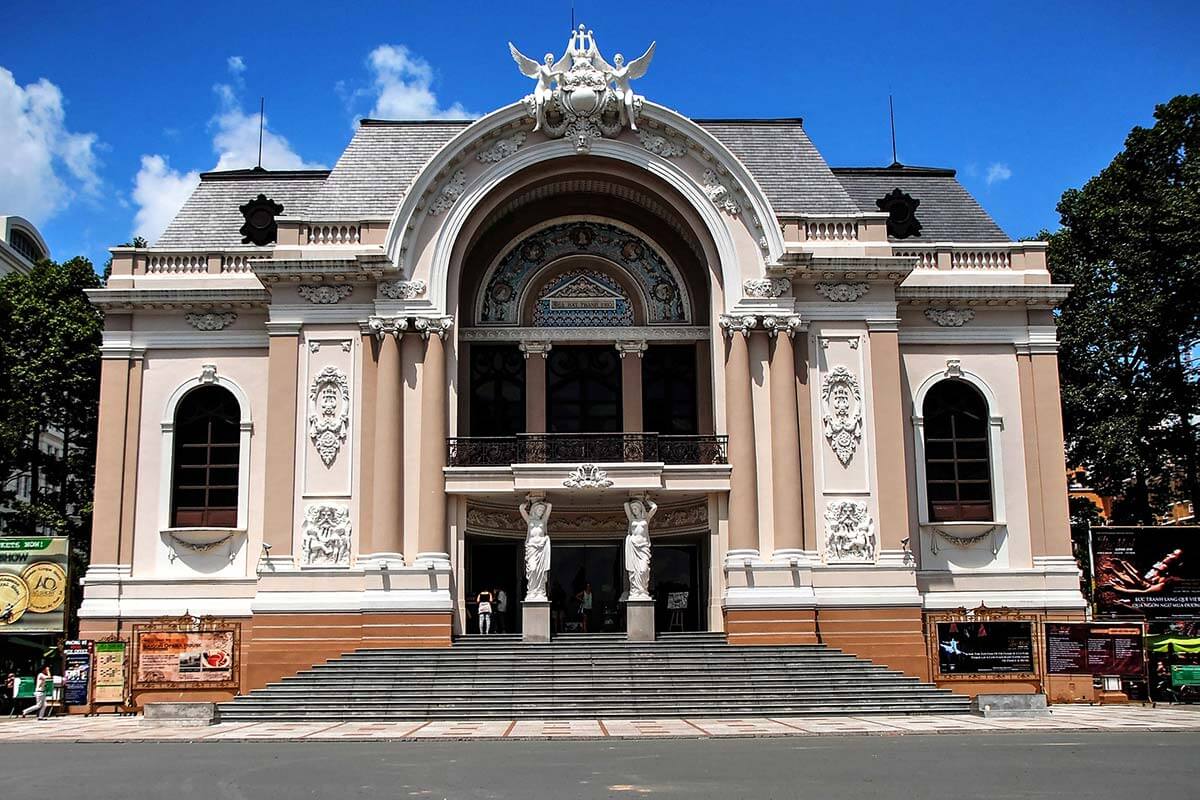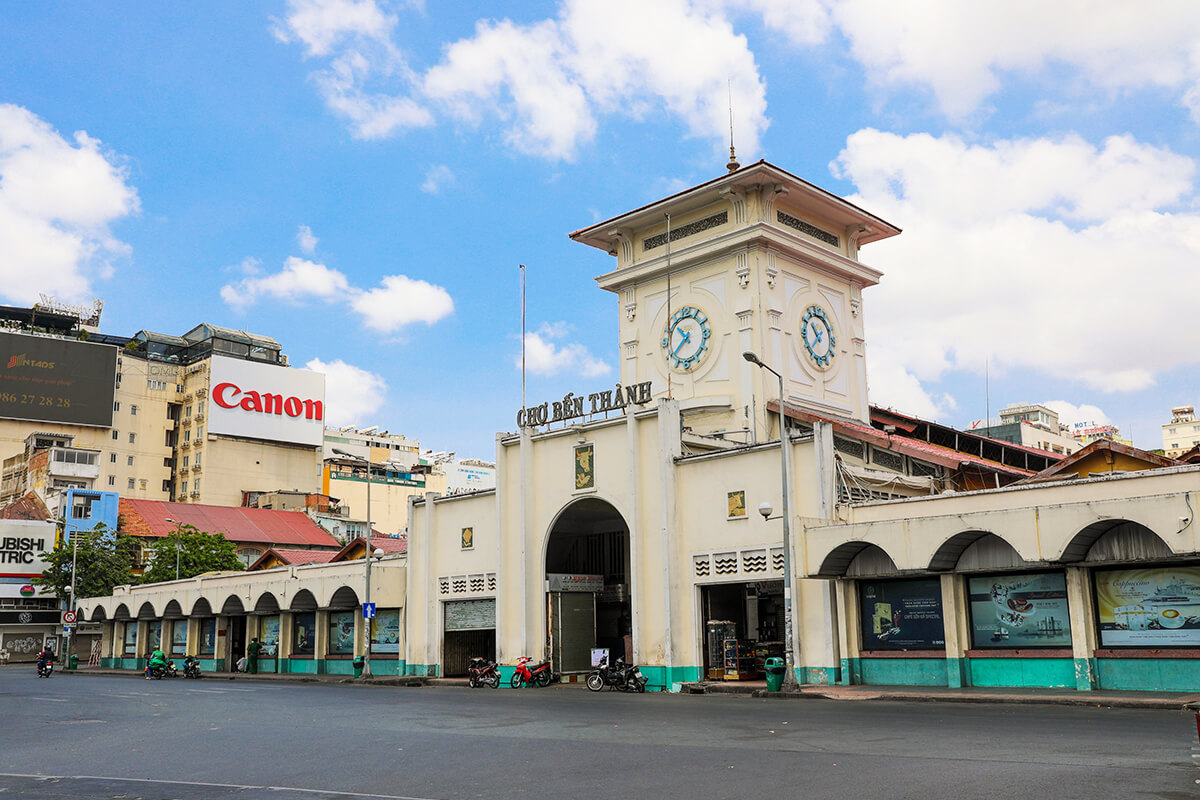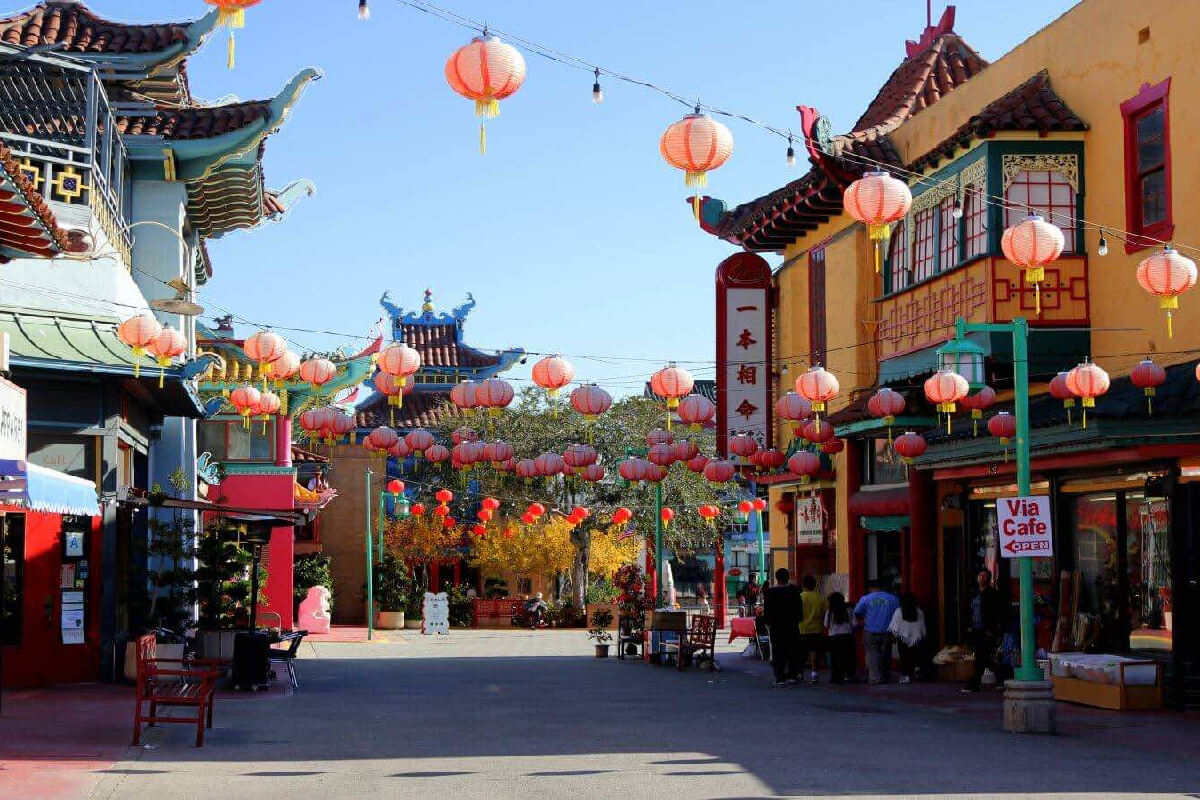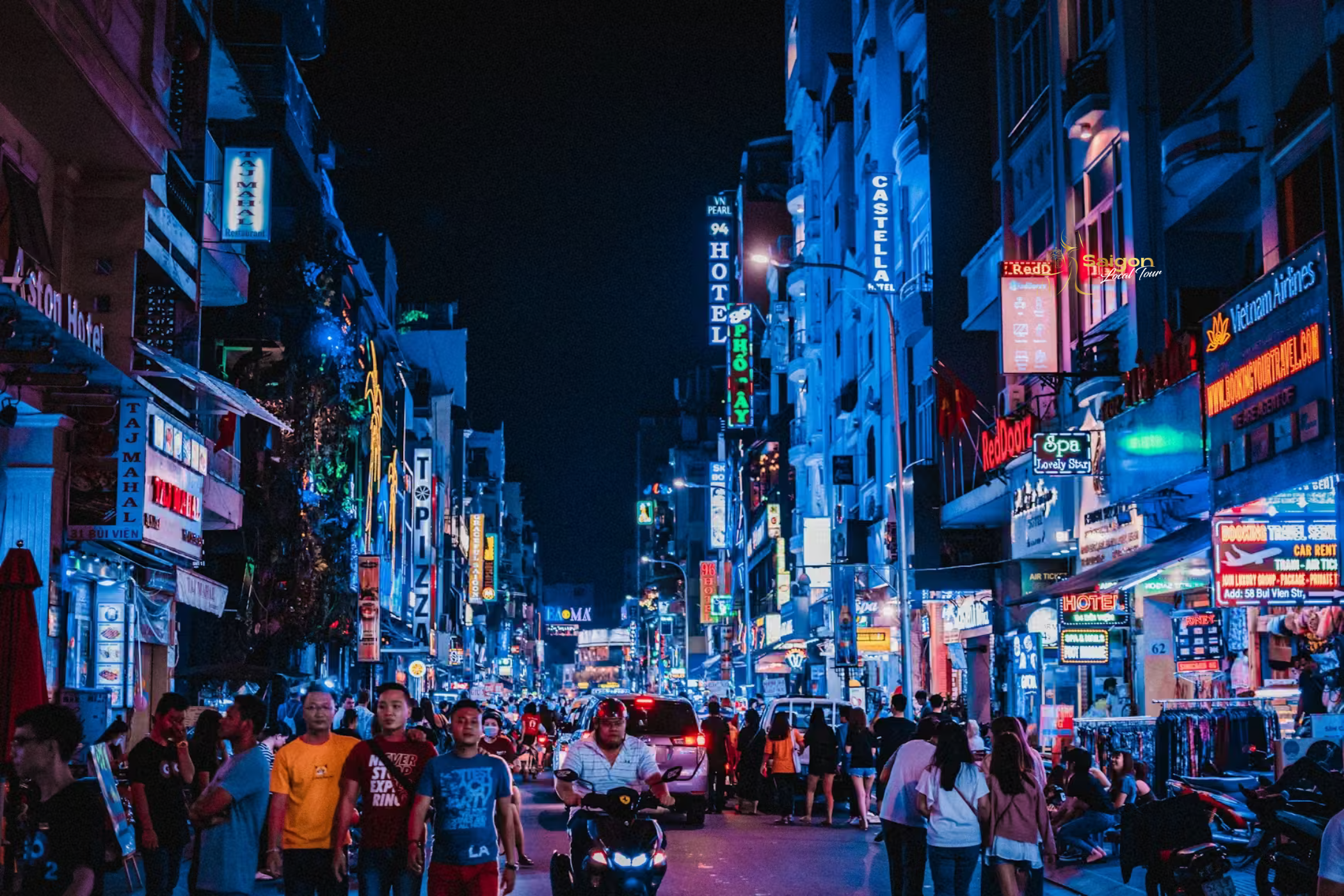Ho Chi Minh City (formerly Saigon), Vietnam's vibrant southern metropolis, blends history, culture, and modernity. From historic landmarks to bustling markets, this city is brimming with attractions that captivate visitors. If you are a first-time visitor, we’ll discover the top 10+ must-see places in Ho Chi Minh city to visit and tips for making the most of your trip!
Why you should visit Ho Chi Minh City at least once
Ho Chi Minh City, often called Saigon, is a destination that every traveler should experience at least once. Known for its vibrant mix of history, culture, and modernity, the city offers countless attractions that cater to diverse interests. From exploring iconic landmarks like the Independence Palace and War Remnants Museum to immersing yourself in the dynamic street food scene, Ho Chi Minh City promises unforgettable memories. The bustling markets, such as Ben Thanh Market, and spiritual sites like the Jade Emperor Pagoda add a unique charm to your visit.
Ho Chi Minh City the modern city in Vietnam
The city’s modern skyline, featuring landmarks like Landmark 81, highlights its rapid growth and urban energy. Moreover, the traveling cost in Ho Chi Minh City isn’t expensive, suitable for all of the traveler’s demand. Ho Chi Minh City is also a paradise for foodie lovers, highly recommend you try Hu Tieu, Banh Xeo, Com Tam, Pho,... With warm hospitality, delicious cuisine, and a fascinating history, Ho Chi Minh City is a must-see destination that perfectly combines tradition and modernity.
The 10+ Best Popular Attractions You Should Visit In Ho Chi Minh City
Cultural and Historical Attractions in Ho Chi Minh City
Independence Palace (Reunification Palace)
Address: 135 Nam Ky Khoi Nghia st., Dist.1, HCMC
106 Nguyen Du st., Dist.1, HCMC
Opening hour: from 7:30 AM to 11:30 AM and 01:00 PM to 05:00 PM
The Reunification Palace, also called the Independence Palace, is recognized as a historical landmark due to its significant role in the history of Ho Chi Minh City (formerly Saigon) and its embodiment of Eastern cultural heritage. Throughout the heroic battles, this remarkable architectural masterpiece has stood as a witness to nearly every pivotal moment of the Vietnam War.
Constructed in the 1960s by architect Ngo Viet Thu, the palace's design reflects a blend of modernist and traditional Vietnamese architectural elements. Its wide, open spaces, elegant gardens, and grand reception rooms offer a stark contrast to the intense history the building holds. The most famous moment in the palace’s history occurred on April 30, 1975, when a tank force crashed through the gates, marking the fall of Saigon and the end of the war, an event that led to the reunification of Vietnam.
Visitors to the Independence Palace can explore its lavish interiors, including the grand ballroom, the presidential office, and the luxurious living quarters. The palace’s Reunification Hall on the second floor is particularly significant, where historic meetings between key political figures took place. Today, it serves as a museum that displays photographs, documents, and artifacts related to the Vietnam War and the country’s long path to independence. The Independence Palace is more than just a building—it is a symbol of the resilience and determination of the Vietnamese people during the war.
Cu Chi Tunnels
Address: TL15, Phu Hiep, Cu Chi District, Ho Chi Minh City
Opening hour: from 8:00 AM to 5PM
The Cu Chi Tunnels, an expansive underground network, were originally constructed beneath the jungle landscape to connect villages and communes during the Indochina War (1945-1954) against the French colonizers. These tunnels served as hidden shelters for Vietnamese revolutionary forces, allowing them to move between regions while evading French detection.
During the Vietnam War, the tunnel system was expanded to become a key hub for Communist guerrilla fighters, providing shelter for troops, transportation for supplies and communications, medical care, and protection from aerial bombings. The tunnels also enabled surprise attacks, allowing soldiers to disappear underground after an assault. As a military base, the Cu Chi Tunnels played a pivotal role in the Vietnamese resistance against the American forces in South Vietnam, serving as a strategic location for planning and executing successful military campaigns, including the Tet Offensive of 1968. These historic tunnels, which endured the hardships of war, stand as a symbol of the resilience and ingenuity of the Vietnamese people.
War Remnants Museum
Address: 28 Vo Van Tan, District 3, Ho Chi Minh City
Opening hour: 7:30 AM - 5:30 PM
The War Remnants Museum, established on September 4, 1975, is a proud member of the International Network of Museums for Peace (INMP) and the International Council of Museums (ICOM). As the only museum in Vietnam dedicated to the in-depth study, preservation, and exhibition of war crimes and their lasting effects on the Vietnamese people, it plays a vital role in educating visitors about the atrocities committed by foreign aggressors. The museum advocates for global peace by raising awareness about the devastating impact of wars. Its mission encourages nations to unite in solidarity, fostering friendship and understanding across borders.
Featuring 9 permanent thematic exhibitions alongside a variety of special collections, the museum offers a rich and engaging experience for visitors. Throughout the year, it hosts conferences, war witness encounters, and both temporary and traveling exhibitions. With nearly one million visitors annually, the War Remnants Museum stands as one of the top cultural and tourist attractions in Ho Chi Minh City
Spiritual and Religious Places to Visit in Saigon
Jade Emperor Pagoda
Address: 73 Mai Thi Luu Street, Dakao Ward, District 1, Ho Chi Minh City.
Opening hour: from 8:00 AM to 5PM
The Jade Emperor Pagoda is an iconic spiritual landmark in Ho Chi Minh City, widely regarded as one of the most beautiful and important Taoist temples in Vietnam. Located in the District 1 area, this stunning temple was built in 1909 and is dedicated to the Jade Emperor, who is considered the supreme god in Taoist mythology. The pagoda is an excellent representation of Vietnamese religious traditions, blending elements of Taoism, Buddhism, and local beliefs.
The Jade Emperor Pagoda is a visual masterpiece, with intricate architecture that reflects Taoist aesthetics. Inside the pagoda, visitors will find a variety of paintings, statues, and altars crafted from different materials such as wood, porcelain, and even cardboard. The pagoda houses around 300 figurines, with 100 of them made from cartridge paper. The pagoda consists of three main halls: the front hall, the middle hall, and the back hall. Each hall is a unique example of ancient architectural artistry. The front hall features a Buddha statue. The pagoda serves as a place for worship, prayer, and rituals dedicated to various deities. Visitors often light incense to honor the gods and ask for good fortune, health, and protection. The rituals at the pagoda are a blend of Taoist practices and Buddhist influences, making it a unique place of worship in Ho Chi Minh City.
Tan Dinh Church
Address: 289 Hai Ba Trung, Ward 8, District 3, Ho Chi Minh City,
Tan Dinh Church is open to visitors every day of the week, allowing you to visit and take photos at any time throughout the year, free of charge. However, please note that visitors are not permitted inside the church during mass times. The mass schedule is as follows:
Weekday Masses: 5:00 AM, 6:15 AM, 5:30 PM, 7:00 PM
Sunday Masses: 5:00 AM, 6:15 AM, 7:30 AM, 9:00 AM, 4:00 PM, 5:30 PM, 7:00 PM
Tan Dinh Church is one of the most distinctive landmarks in Ho Chi Minh City, renowned for its unique beauty and vibrant colors. This church stands out with its striking pink exterior, making it one of the most recognizable architectural sites in Saigon. Built in the late 19th century, Tan Dinh Church features a Gothic design, with pointed arches and intricate details throughout. Its bold and cheerful color gives the church a distinct character, making it an eye-catching symbol of the city.
Tan Dinh Church The pink church in Ho Chi Minh city
In addition to its architectural appeal, Tan Dinh Church is an important religious site for the local Catholic community. Over its long history, the church has hosted numerous religious ceremonies and events, and it continues to serve as a place of prayer and reflection. Visitors often come not only for its spiritual significance but also to appreciate the peaceful and serene atmosphere within its walls. With its perfect blend of architectural beauty and spiritual significance, Tan Dinh Church is not just a religious landmark but also a must-visit destination when exploring Ho Chi Minh City.
Thien Hau Pagoda
Location: 710 Nguyen Trai St., Ward 11, Dist. 5, HCMC
Opening hours: 6 AM – 11:30 AM, 1PM – 4:30PM
Thien Hau Pagoda, located in Ho Chi Minh City’s vibrant Chinatown (Chợ Lớn), is a significant cultural and religious site that attracts both locals and tourists. Built in the 19th century, this pagoda is dedicated to Thien Hau, the Chinese sea goddess, revered for protecting sailors and fishermen. The pagoda’s architecture blends traditional Chinese and Vietnamese styles, with intricate wood carvings, golden statues, and a large incense burner that fills the air with a fragrant, spiritual atmosphere. Its vibrant colors and ornate details make it a must-visit landmark for those exploring the cultural heart of Saigon.
The standout feature of Ba Thien Hau Pagoda is the distinctive pendant hanging from the ceiling. Visitors can purchase rings, write their wishes or prayers on paper, and hang them up alongside an incense stick to make a request to Mrs. Thien Hau. Every day, many people come to the pagoda to pray for safety, prosperity, and other blessings. However, the busiest times are during the first and full moon days of each month, as well as during the Chinese New Year holidays. Particularly, Ba’s Day (March 23rd on the lunar calendar) is regarded as the pagoda’s most important festival.
Modern and Iconic Landmarks in Ho Chi Minh City
Bitexco Financial Tower
Address: 2 Hai Trieu, Ben Nghe Ward, Dist.1, HCMC
The Bitexco Financial Tower is one of the most prominent landmarks in Ho Chi Minh City, not only because of its impressive height but also due to its unique design, which reflects modernity and creativity. Standing at 268 meters tall, this skyscraper is one of the architectural symbols of the city, attracting thousands of visitors every year.
Completed in 2010, Bitexco Financial Tower features a design resembling a blooming lotus flower, symbolizing the rapid growth of Vietnam's economy. It is also an ideal destination for visitors to enjoy panoramic views of the city from above. Saigon Skydeck, the observation deck located on the 49th floor of Bitexco, offers a breathtaking view of the city, from the winding Saigon River to the bustling streets. In addition, Bitexco Financial Tower stands out with modern amenities such as a shopping mall, upscale restaurants, and event spaces. Visitors can stop by the retail stores, enjoy dining at the fine restaurants, or attend major events hosted at the tower.
Landmark 81
Address: 720 A Dien Bien Phu, Ward 22, Binh Thanh District, Ho Chi Minh City
Landmark 81 is one of the most modern architectural icons in Ho Chi Minh City, located in the Vinhomes Central Park urban area in Binh Thanh District. The design of Landmark 81 is inspired by the shape of a bamboo tree, representing a perfect combination of traditional and modern elements. It is a must-see destination for those wanting to admire a panoramic view of the city from above.
Landmark 81 is not only a high-rise building but also a center for commercial, office, and luxury residential spaces. On the 79th and 80th floors, visitors can explore the observation deck, where they can enjoy breathtaking views of the entire city and the Saigon River. In addition, there are luxurious amenities such as restaurants, cafes, and high-end shopping areas, offering a complete experience for both locals and tourists.
Furthermore, Landmark 81 is part of the Vinhomes Central Park complex, which integrates many outstanding amenities, including a riverside park, a sports center, and entertainment areas. It is an ideal spot for those who want to combine sightseeing and relaxation, with a green, airy space and convenient services, creating an ideal living and working environment. Landmark 81 has become a new symbol of Ho Chi Minh City, attracting millions of tourists every year and is a source of pride for the Vietnamese people.
Saigon Opera House
Address: 07 Lam Son Square Street District 1, Ho Chi Minh City
Opening hour: 9 AM - 5 PM
Saigon Opera House (Municipal Theatre), a cultural landmark of Ho Chi Minh City, is one of the most beautiful French colonial architectural structures still standing in the city. Built in 1897, this opera house showcases a blend of Gothic, Baroque, and Renaissance architectural styles, with intricate decorative details, high arches, and finely carved walls. It is not only a historical building but also a hub for cultural and artistic events, attracting numerous visitors both locally and internationally.
Nowadays, the opera house hosts a variety of performances, from classic operas to orchestral concerts, ballets, and musicals. It appeals not only to those who love music and the arts but also to visitors drawn to its elegant and formal atmosphere, where they can enjoy world-class performances by renowned artists. With its luxurious design and classic architecture, the Saigon Opera House is an ideal place to experience high-quality international performances. In addition to performances, the Saigon Opera House is a must-see destination for city tours. Visitors can take photos and admire the beauty of the French colonial architecture from the outside.
Shopping and Entertainment Areas
Ben Thanh Market
Address: Le Loi Street, Ben Thanh Ward, District 1, HCMC
Ben Thanh Market is one of the most iconic cultural landmarks in Ho Chi Minh City. Located in the heart of District 1, the market was built in 1914 and has long been a must-see destination for visitors to the city. With its historical architecture, Ben Thanh Market is not only a hub for trade but also a place that preserves unique Vietnamese products, ranging from clothing and household items to distinctive souvenirs.
In addition to handicrafts, Ben Thanh Market is famous for its street food, particularly Southern specialties such as pho, banh mi, and spring rolls. Visitors can enjoy these delicious dishes right at the market stalls, making it a delightful culinary experience. It’s also an ideal place to explore the rich culinary culture of Vietnam in a lively and welcoming setting. Ben Thanh Market serves not only the local population but also attracts tourists looking for great shopping opportunities. At night, the market becomes even more vibrant as its stalls open up with a wide variety of products, from fabrics to souvenirs.
Saigon’s Chinatown (Chợ Lớn)
Address: 165 Hai Thuong Lan Ong St., Ward 13, Dist 5, HCMC
Saigon’s Chinatown, known locally as Cho Lon, is a vibrant and bustling district that offers a unique glimpse into the fusion of Vietnamese and Chinese cultures. Located in District 5, this area is home to a mix of traditional Chinese shops, temples, and street markets. Here, you’ll find everything from Chinese herbal medicine stores and gold shops to colorful lanterns and intricate decorations that reflect the area’s deep-rooted heritage. Chợ Lớn is not only a marketplace but a living testament to the centuries-old Chinese influence on Saigon’s history.
One of the highlights of Saigon's Chinatown is its food scene, where traditional Chinese-Vietnamese dishes like dim sum, steamed buns, sour phở are served in small eateries and street food stalls. The area’s bustling markets are perfect for those looking to explore a variety of local produce, spices, textiles, and traditional goods. The aromas of street food, combined with the vibrant colors of fresh ingredients, make walking through Chợ Lớn an unforgettable sensory experience.
Bui Vien Walking Street
Address: 101 Bui Vien St., Pham Ngu Lao Ward, District 1, HCMC
Bui Vien Walking Street is one of the most vibrant and bustling destinations in downtown Ho Chi Minh City. Located in District 1, Bui Vien Walking Street attracts a large number of both local and international visitors with its lively and colorful atmosphere. Here, you can experience a completely different space compared to the quiet, serene streets of the city. On weekends, the street comes alive with cafes, restaurants, bars, and souvenir stalls, creating a dynamic and energetic environment.
Bui Vien is a blend of modern and traditional cultures, where you can enjoy street food specialties such as banh mi, pho, or fresh seafood, while also watching unique street performances. Musicians, circus performers, and traditional games create an entertaining environment for both locals and tourists. This walking street is especially popular with young people and international visitors, making it an ideal place to immerse yourself in the energetic pace of the city.
Not only is Bui Vien Walking Street a place for entertainment, but it is also a great spot to explore the urban culture of Ho Chi Minh City. Alongside modern bars, you can find shops selling traditional Vietnamese souvenirs, including áo dài, paintings, and other keepsakes. This is one of the must-visit destinations when traveling to Saigon, where you can enjoy a diverse mix of culture, cuisine, and entertainment in a fantastic setting.
